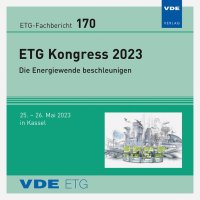Rooftop Photovoltaic Systems in German Agriculture – An Analysis of the Status quo and Potential for the future
Konferenz: ETG Kongress 2023 - ETG-Fachtagung
25.05.2023-26.05.2023 in Kassel, Germany
Tagungsband: ETG-Fb. 170: ETG Kongress 2023
Seiten: 6Sprache: EnglischTyp: PDF
Autoren:
Klabunde, Felix; Engel, Bernd (Technische Universität Braunschweig, elenia Institute for High Voltage Technology and Power Systems, Germany)
Inhalt:
With the energy transition taking place in Germany, the historic structure of a top-down supply with few centralised large power plants is changing to a bottom-up structure with many small, decentralised producers of regenerative energy. These small plants are connected directly to the lower voltage levels, in the case of rooftop photovoltaic (PV) mainly to the low-voltage grid. Currently, more than 70 % of the installed PV capacity in Germany can be attributed to rooftop PV, which will continue to play a major role in the electricity sector in the future as these systems allow for a surface-neutral power production on already sealed surfaces. In agriculture, especially large roof areas of animal barns, warehouses, machine halls and administration buildings are suitable for the installation of rooftop PV. In 2021, the installed rooftop PV capacity in agriculture was approx. 11 GW and thus accounted for 18.8 % of the overall installed capacity in Germany. The majority of the systems are operated as full feed-in systems; self-consumption has only played a subordinate role in agriculture so far, despite significant electricity consumption in some cases. To determine the further expansion potential for rooftop PV systems in agriculture and thus contribute to the climate-friendly transformation of the German energy system, this paper focuses on determining the status quo and potential of energy generation using rooftop PV systems in agriculture. Using data from the core energy market data register, agricultural structure data and building models, the existing rooftop PV systems and theoretical potentials are analysed for each county in Germany. Finally, the results are discussed in the context of the German climate goals in energy supply.


